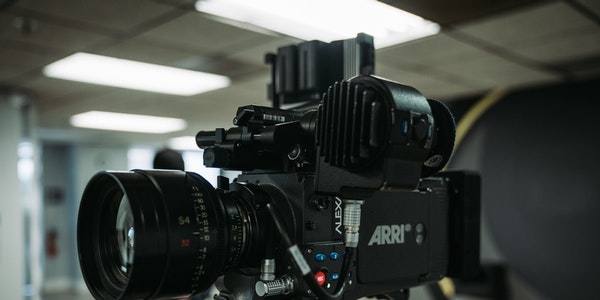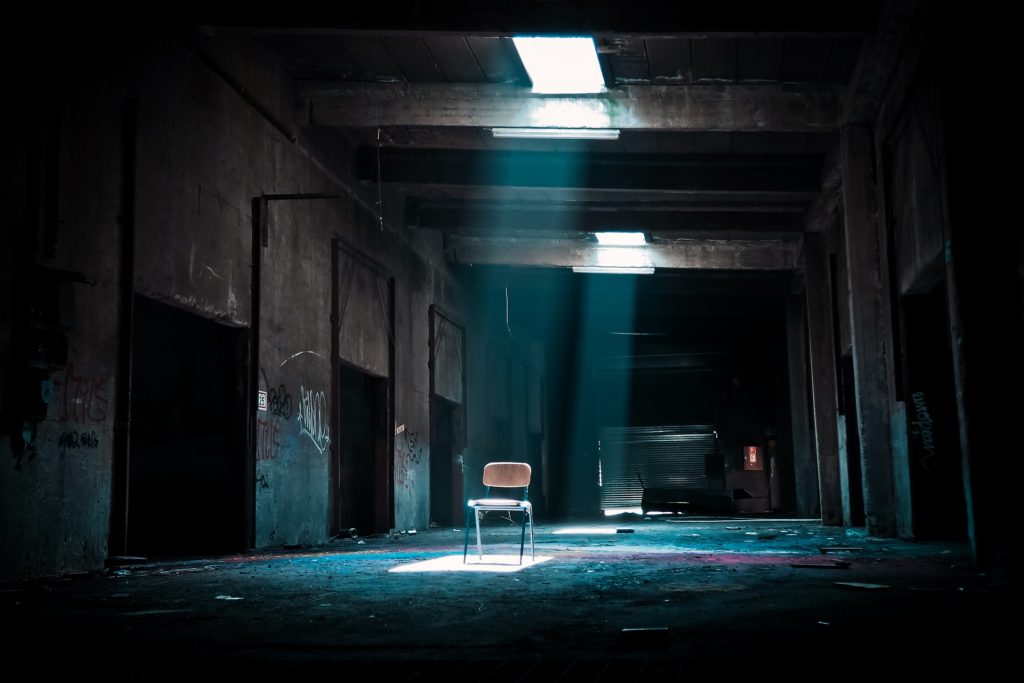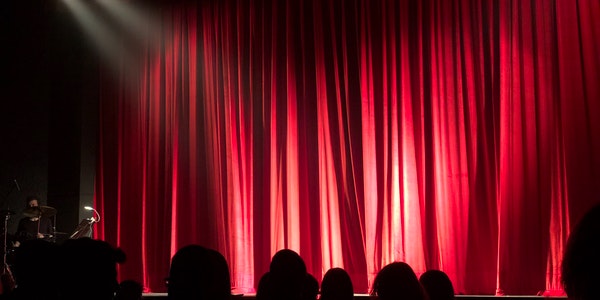Silhouette-the balance point between prominence and omission
Silhouette is one of the most common light and shadow processing methods in movies. It can effectively omit the appearance of characters and divert the audience’s attention to more important places.
For example, in some action movies, the protagonist fights in silhouette. On the one hand, it can highlight body movements, and on the other hand, it also enriches the diversity of martial arts scenes. It is a way of expression that action movie directors love to see.
This high-rise fighting scene in “007: Skyfall” is the most talked about,
Not only is the action play coherent and beautiful, the jellyfish pattern on the background curtain wall also enhances the artistry of the play.
Hardness and softness are reflected in the same picture, beautifully.
In other words, light and shadow can divide the picture into two levels, juxtaposing two opposing elements in the same plane at the same time, in order to express a certain complexity of the film.

For example, at the end of “Fight Club”, in the foreground is a static silhouette of Jack holding a horse’s hand. In the background, we see a skyscraper crashing down, which is both violent and beautiful.
In this picture, the foreground symbolizes unity, and the background represents split, which coincides with the duality of deconstruction and reconstruction of Fight Club.
Sometimes the background in the highlighted part can be used as an atmosphere to set off the role. For example, in “City of Philharmonic”, lovers dance under the stars, and in “ET Alien”, the little boy rides ET through the night sky. …
The background creates a romantic and fantasy atmosphere for the relationship between the characters in the silhouette.
The most common time for this kind of expression in the film is at sunrise or sunset.
In film studies, this period is also known as the magic period, and it is called Golden Hour in English.
As the name suggests, because the angle of the sun’s rays is close to the horizon, the color temperature is low, and the whole picture is warmed by the orange-red light, which is especially suitable for the director’s inner drama of the characters in the foreground.
For example, in “Sunny Day”, there is Ma Xiaojun overlooking Milan and Liu Yi have a good relationship, which is particularly unpleasant in my heart.
In some cases, the silhouette does not need the assistance of the background. The reason why the director uses the silhouette is to hide more details and deliberately create a sense of mystery.
For example, Hitchcock’s classic “Scary” and master Dreyer’s “Vampire” have such applications.
This technique is common in horror genre movies, and shadows have almost become synonymous with evil forces such as demons and murderers.

Shadows-the key profiling of the characters at the beginning
Using shadows to introduce characters is also a way that many directors like to use.
For example, when Kubrick called “Perfume”, the magical film “It’s impossible to be put on the screen in this century”, director Tom Tykway puts the actor in a shadow at the beginning, revealing only his magical nose. .
The use of shadows is quite clever to simplify or even omit unnecessary visual elements, focusing on highlighting what you want the audience to see, and only one shot immediately makes it clear that this is a movie about smell.
“Lust and Caution” takes another routine. Ang Lee wants to introduce the spy chief Mr. Yi to appear on the stage. The character is mysterious enough, and the profession he is engaged in is also a hidden work, so he arranged for him to walk a long dark corridor. Until the audience can’t stand his temper, I will show you who he is.
Doing so highlights the eagle-like eyes of Mr. Yi, showing the ferocity and mystery of this person.
The opening chapter of “007: Skyfall” is also the same routine in the same world.
James Bond walked in the form of a silhouette from the soft focus of the background, and his face was illuminated by a beam of light only close up, which also highlighted the eyes, but this time the director wanted to express the sharpness and dexterity of the characters. vigilance.

Let’s look at the beginning of “The Godfather”. Coppola’s design scared Paramount. The first shot was not aimed at the protagonist, but at a small person who is not very important.
The lens is slowly opened, and the old godfather’s stretched and majestic back is shown in the soft-focus shadow area. This effect is much more advanced than the direct frontal shooting of the old godfather.
Seeing this, you must have discovered that all characters who appear through the shadows have the same characteristic, that is, mystery.
Especially those supernatural creatures are most suitable to appear in the form of shadows, such as the Mushu dragon in “Mulan”, the beast in “Beauty and the Beast”, the mop elf in “Fantasia 2000″…
Their first appearances are to meet the audience in the form of shadows, which can also be regarded as a kind of classic Disney routine!
The gradual escalation of a generation of godfathers
Speaking of the first person to use shadows, Hollywood has a “Prince of Shadows”,
He is the famous photographer Gordon Willis.
Without his classic dedication in the “Godfather” series, I am afraid that today’s filmmakers would not be able to play so many tricks on the knowledge of shadows.
Take the protagonist Mike as an example. In the initial stage of the first part of “The Godfather”, Mike had just returned from service in the army and had never been involved in the gang business run by his father. At this time, most of his face is in the highlighted area, without shadows.
But as the relationship with the family business became closer, the shadow area on Mike’s face became larger and larger.

Although the “Godfather” series is contrary to the cold image of the gangster we usually think. But Gordon Willis still defines the gang as an outsider, so the closer the character is to the gang, the larger the shadow area of the face presented in the film.
When Mike successfully executed the mission and killed the boss of the opposing family, it also meant that he completely assumed the mission of the Corleone family. At this moment, the shadow occupies three-quarters of his face, which is also his deepest involvement in the family business since the beginning of the article.
However, the beauty of Gordon Willis is that the facial shadows he designs for each of the main characters are different.
For example, the old godfather played by Marlon Brando uses ceiling lighting every time he makes his appearance.
This lighting method will leave a large thick shadow under the high brow bones that are unique to Westerners, making it impossible to see his eyes, resulting in an unfathomable feeling.
Even under the big sun outdoors, the old godfather’s face is still wrapped in shadow.
Another distinctive shadow character is Tom Hagen, the son of the old godfather.
He often shows people with half of his face shrouded in shadow and half of his face clearly visible. This method of expression has three meanings.
One is that Hagen is responsible for the business of the Corleone family to the public. The half-darkness represents his duality of black and white.
The second is that Heigen is an adopted son brought up by the old godfather. He is both his own and an outsider in the Corleone family. The half-darkness represents his embarrassing situation.
Third, Heigen waved in confidence in the Corleone family after losing the protection of the old godfather. The half-darkness represented his wavering heartfelt, which can be said to be very ingenious.
Another special case is the eldest son of the old godfather, Sonny, who was originally the first heir to the throne of the godfather, but was indirectly assassinated by the enemy because of his too hot temper.
When photographing this character, Gordon Willis deliberately did not put any shadow on his face, considering his direct character.
Sonny in the audience is shown with a bright face, which also reminds the audience that Sonny is definitely not the ultimate successor of the godfather.
The shadow, whether it is fifty shades of gray or fifty shades of black, did not expect that there is so much attention to it.
Under Gordon Willis’ pioneering research and experimentation on shadows, finally “Film Noir” no longer just stays in the subject of black, but has further achieved a unity of black at the level of light and shadow art.
